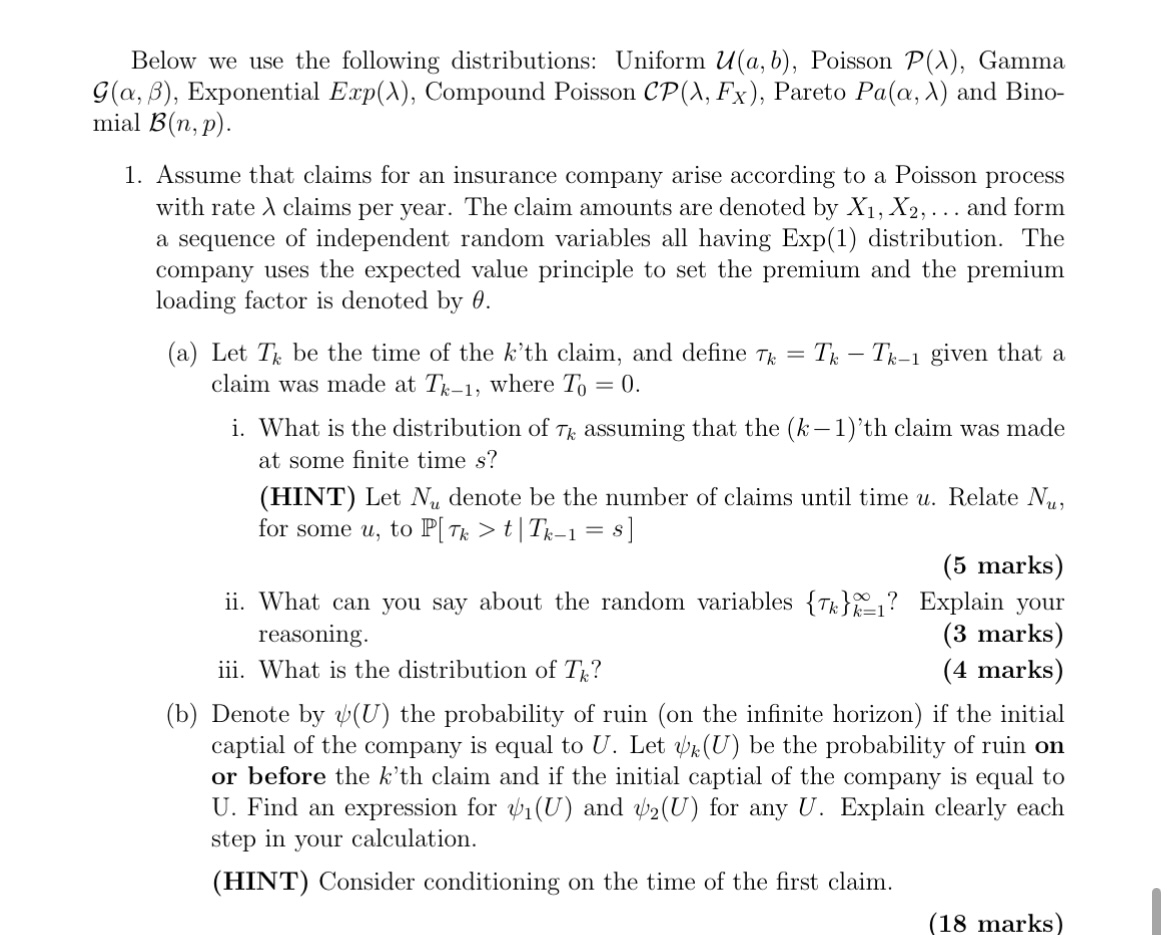Answered step by step
Verified Expert Solution
Question
1 Approved Answer
Below we use the following distributions: Uniform U(a, b), Poisson P(A), Gamma G(a, b), Exponential Exp(A), Compound Poisson CP(A, Fx), Pareto Pa(a, ) and

Below we use the following distributions: Uniform U(a, b), Poisson P(A), Gamma G(a, b), Exponential Exp(A), Compound Poisson CP(A, Fx), Pareto Pa(a, ) and Bino- mial B(n, p). 1. Assume that claims for an insurance company arise according to a Poisson process with rate A claims per year. The claim amounts are denoted by X1, X2,... and form a sequence of independent random variables all having Exp(1) distribution. The company uses the expected value principle to set the premium and the premium loading factor is denoted by 0. (a) Let T be the time of the k'th claim, and define Tk claim was made at Tk-1, where To = 0. = TkTk-1 given that a i. What is the distribution of Tk assuming that the (k-1)'th claim was made at some finite time s? (HINT) Let N denote be the number of claims until time u. Relate Nu, for some u, to P[Tk > t | Tk1 = s] (5 marks) ii. What can you say about the random variables {T}? Explain your reasoning. iii. What is the distribution of Tk? (3 marks) (4 marks) (b) Denote by (U) the probability of ruin (on the infinite horizon) if the initial captial of the company is equal to U. Let (U) be the probability of ruin on or before the k'th claim and if the initial captial of the company is equal to U. Find an expression for (U) and 2 (U) for any U. Explain clearly each step in your calculation. (HINT) Consider conditioning on the time of the first claim. (18 marks)
Step by Step Solution
There are 3 Steps involved in it
Step: 1

Get Instant Access to Expert-Tailored Solutions
See step-by-step solutions with expert insights and AI powered tools for academic success
Step: 2

Step: 3

Ace Your Homework with AI
Get the answers you need in no time with our AI-driven, step-by-step assistance
Get Started


